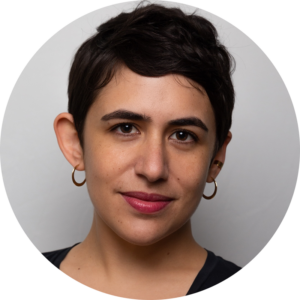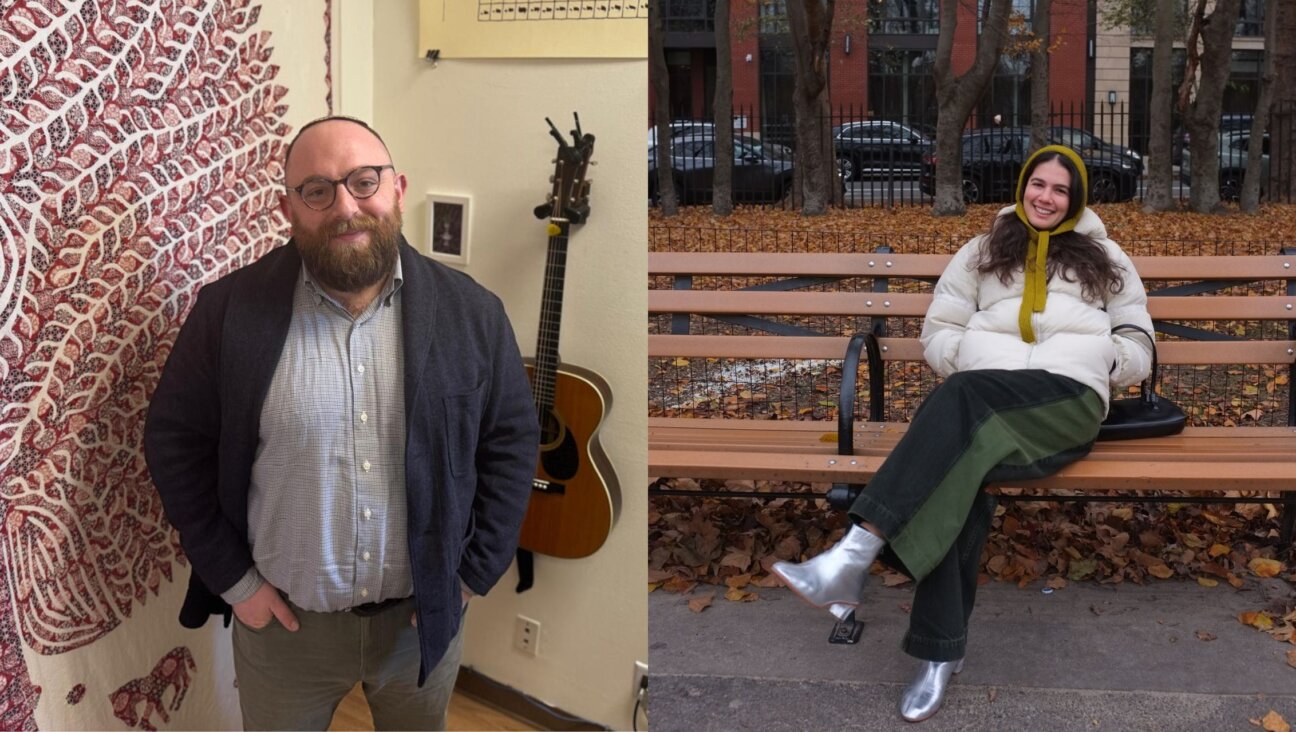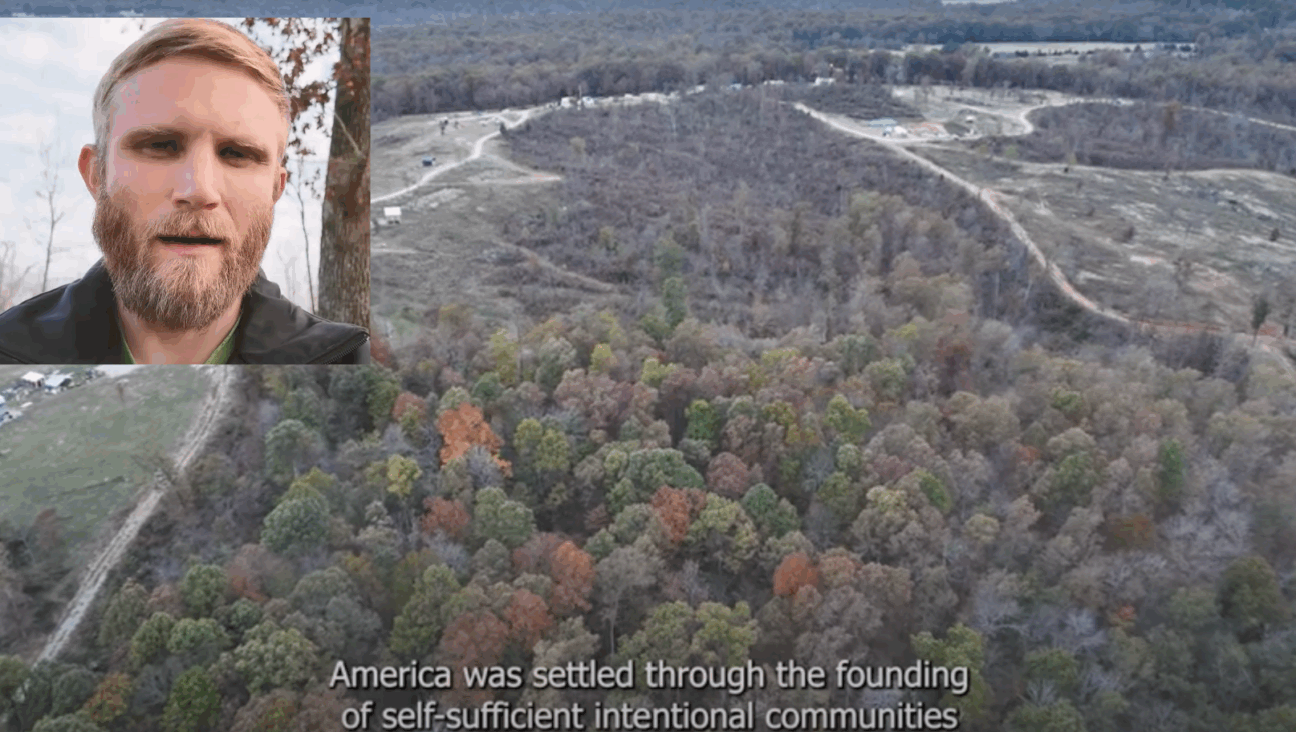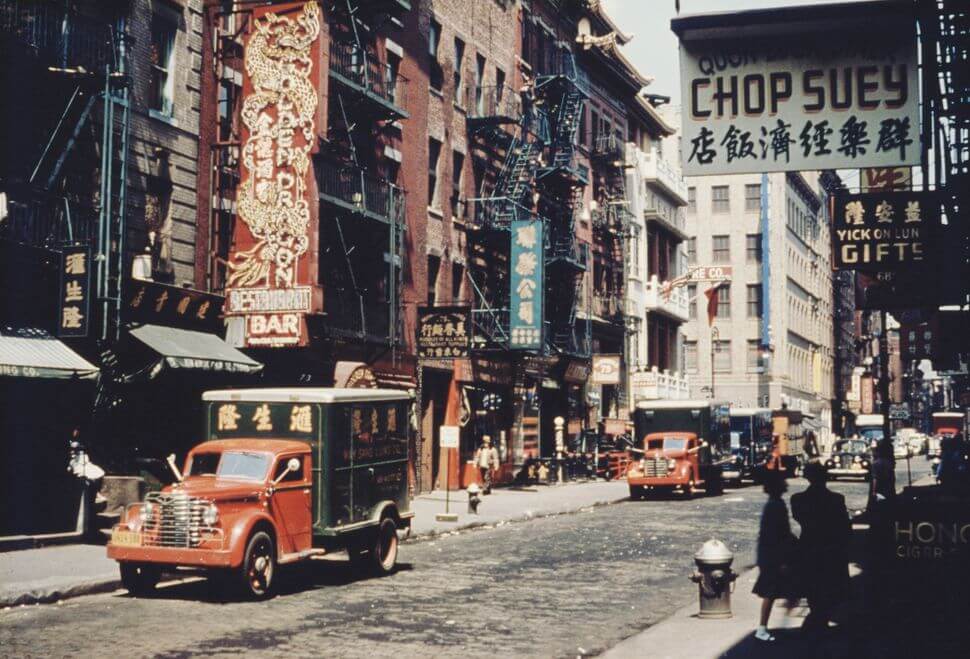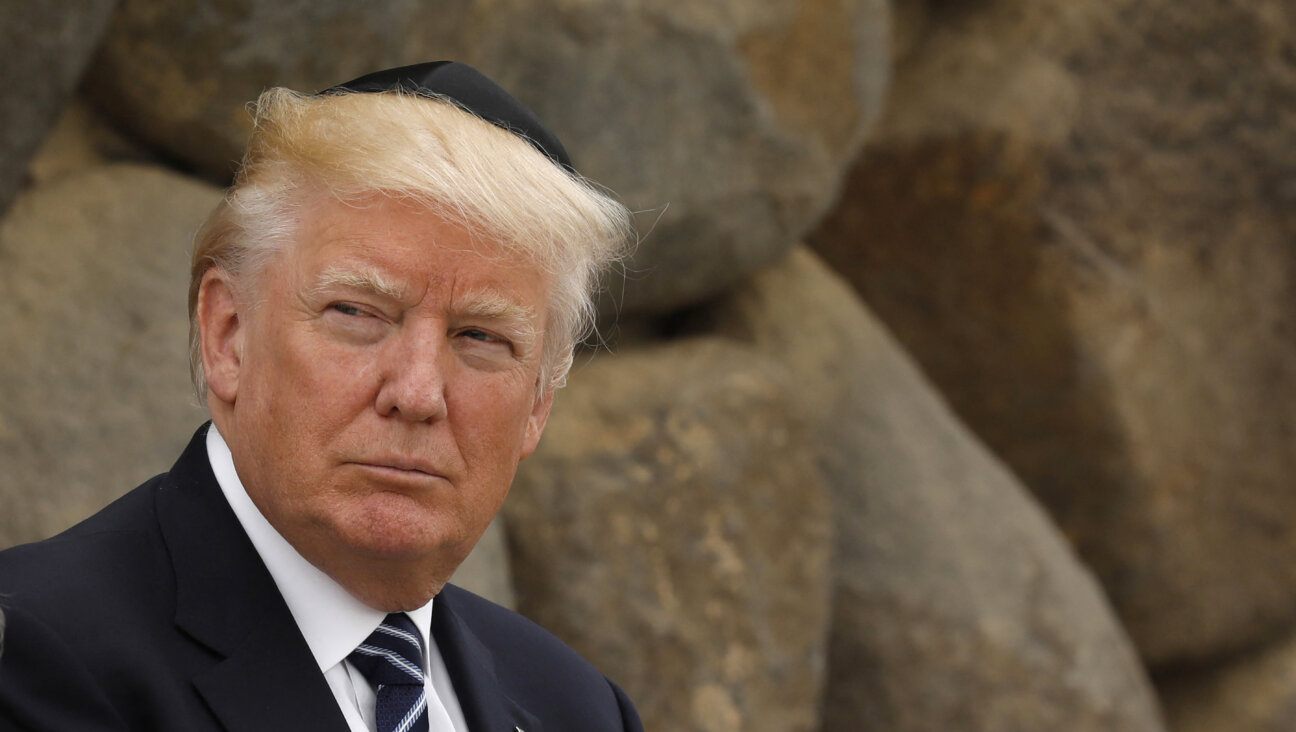How this Marc Chagall painting explains Pope Francis’ soul
The late pope’s favorite painting was a reaction to the horrors of the Nazi regime

Pope Francis examines Marc Chagall’s White Crucifixion during its exhibition in Rome on Dec. 8, 2024. Photo by Vatican Media via Vatican Pool/Getty Images
“Pain is depicted there with serenity,” said Pope Francis of his favorite painting, Marc Chagall’s White Crucifixion.
He’s right. The 1938 painting, which Chagall, then living in France, produced in reaction to horrifying Nazi crimes against Jews, is a showcase of ordered disorder. In it, a Jewish Jesus on the cross, his lower half covered by a folded tallis, is surrounded by a series of tableaus depicting Jewish suffering. A synagogue is set on fire by a man wearing what was once clearly a Nazi armband. (Chagall eventually painted over the swastika.) A man fleeing an unseen menace, a Torah cradled in his arms, glances backwards to check for pursuers. Above the cross, the spirit of a rabbi — seemingly deaf to the animated discussion of the other Jewish spirits surrounding him — weeps.
Pain depicted with serenity. The honest truth of the world’s brutality and injustice, approached with grace. A beautiful accounting of absolute ugliness. Francis’ love for an artwork that brings together so many experiences of misery — pogroms, desecrations, forced migrations with no clear endpoint, grief, derision, isolation — told a powerful implicit story about how the pontiff saw the world, and his holy role within it.
Francis, who spoke about Chagall’s painting in a 2010 biography, died Monday at 88. That he passed mere hours after Easter, a celebration of Jesus’ resurrection post-crucifixion, deepens the resonance of his reaction to the Chagall. There are eras of darkness in the world; they are followed by eras of light. The violence of White Crucifixion is “not cruel, but hopeful,” said Francis, who first saw the painting in 2015, after long adoring it from afar.
But expressions of hopelessness in the painting, which is held by the Art Institute of Chicago but not currently on view, are easier to identify.
The bearded man in the lower left corner, his face gaunt and arms flung open in a gesture of terrified appeasement. (A placard hung around his neck once read “Ich bin Jude,” or “I am a Jew”; Chagall eventually scrubbed the phrase, like the swastika, from the image.) The figure of the wandering Jew — a persistent trope for Chagall — bent forward against the wind, eyes closed in resignation. Even Jesus himself, the corners of his mouth turned down, as if he has departed the world in a state of profound disappointment.
So how could Francis see any hope in the image? Perhaps because of his own experience of life in a society under siege. Born in Argentina, he witnessed firsthand the miseries of military dictatorship in the 1970s. The situation at the time, he said in 2023, “was really very confused and uncertain.” He himself faced (and adamantly denied) accusations that he was in part responsible for the regime’s capture of two fellow Jesuits, who subsequently faced months of torture.
Once someone has lived through the kind of suffocating fear that a regime like that in Argentina, or that of the Nazis, can create, perhaps they simply see suffering differently. And if you look carefully, you can see that suggestion within Chagall’s painting. It’s not quite the idea that to accept suffering is noble. It is that there is a kind of fragile peace to be found in the act of surviving what might seem unsurvivable.
That peace comes through in the blank spaces of White Crucifixion — the unearthly pale landscape on which the scenes of brutal persecution play out. There is a glorious stillness in that whiteness; it appears to freeze the destruction occurring in each quadrant of the painting.
One could pessimistically interpret this juxtaposition of violence and encompassing quiet as a suggestion that no part of life can be separate from pain, and that moments of respite are only illusory. Or one could, more optimistically, see it as an affirmation of an opposite idea: that to realize the best of human nature is to access the respite alongside the pain.
Jesus, in the center, is a fulcrum for the tragedies unfolding around him. They appear to almost radiate from him, as if, in death, he has opened the great wounds of the world up to mortal sight. But he is caught in a different radiance, too: A vast beam of sunlight, cutting through the dark smoke from the burning synagogue, engulfs him. He is experiencing the greatest pain, and, at the same time, the greatest glory.
No honest engagement with reality can avoid the many things that are terribly wrong with our world. And no such engagement can avoid the things that are terribly beautiful about it, either. “All our interior world is reality,” Chagall said in a 1944 interview. “Perhaps more so than our apparent world.” To experience the apparent and interior worlds with equal acuity — apparent pain, interior capacity for grace — is to understand life, and to understand life is holy.
For Chagall, who would eventually flee France following the Nazi occupation, White Crucifixion marked the start of a series of paintings in which he envisioned Jesus as an emblem of Jewish persecution. Many of the works that followed are characterized by a visceral panic. To look, say, at Persecution, from 1941, or Apocalypse en Lilas (Capriccio), painted between 1945 and 1947, is to feel a horror that is, in its immediacy, nearly physically painful.
There is no easy way to maintain the kind of balance Chagall realized in White Crucifixion. Life has a way of kicking equilibrium out of us. In December, Pope Francis viewed the painting in person for the last time, when it was briefly exhibited in Rome as part of a celebration of Holy Year, a Catholic celebration that traditionally takes place every quarter century.
The jubilee, Francis said in a prayer before visiting the painting, “will be a message of hope for humanity which is so tried by crises and wars.” He gave it a theme: “pilgrims of hope.” He understood, very well, the violence of the world he was about to leave. And he understood, like Chagall, that any experience of peace within that world was something to strive for — not something guaranteed.
